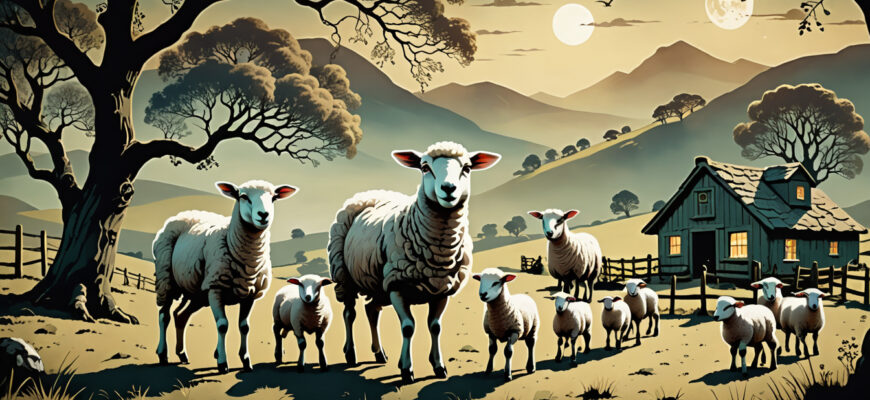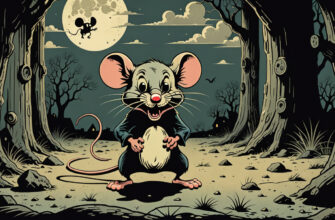Dreams featuring a baby sheep, or lamb, carry a quiet invitation into a world where innocence and new beginnings hold sway. When such gentle creatures appear in sleep, it taps into our subconscious yearning for renewal and tenderness, especially when life feels overwhelming or worn thin. Lambs embody purity—not just in a spiritual sense but as a symbol of the vulnerable state we all carry when stepping into fresh phases. There’s an almost sacred quality to this vulnerability, a place where creative ideas or healing journeys first take root, tender and unformed. Far from weakness, this openness is where true transformation begins.
- Understanding The Symbolism Of Dreaming About A Baby Sheep Or Lamb
- Cultural And Spiritual Contexts Of The Lamb Image
- Emotional And Psychological Messages Behind Lamb Dreams
- The Lamb Through The Lens Of Astrology
- Embracing Queer and Feminist Perspectives on the Lamb
- Challenging Conventional Strength Through Vulnerability
- Care and Tenderness as Radical Acts
- The Lamb in Queer and Feminist Spirituality
- Practical Ways to Work with Lamb Dream Imagery for Inner Growth
- Journaling Prompts to Explore Your Dream’s Meaning
- Rituals During Aries Season and New Moons
- Inviting Radical Hope Through Gentle Self-Nurture
Understanding The Symbolism Of Dreaming About A Baby Sheep Or Lamb
When a lamb shows up in dreams, it often represents the untainted essence of something new. Compared to the adult ram, which carries connotations of fiery passion, assertiveness, or stubbornness, the lamb whispers of ease, freshness, and the raw potential yet to be shaped. This image may reflect an inner state where innocence mingles with hope—a yearning to reset or start over gently after hardship.
Beyond innocence, lambs symbolize vulnerability, often misunderstood but essential. Vulnerability here is not just about feeling exposed; it’s a spiritual and emotional milestone—the courage to feel fragile and still move forward. Such dreams might be nudging the dreamer to honor those tender parts in themselves or their life circumstances where softness is required, not toughness. Asking where tenderness can be welcomed is a powerful prompt stirred by the lamb’s presence.
Cultural And Spiritual Contexts Of The Lamb Image
The lamb carries a rich tapestry of meaning across cultures and spiritual traditions. Christian iconography famously connects lambs with sacrifice and redemption—the “Lamb of God” as a symbol of purity and divine care. Dreams of lambs might suggest embracing grace or releasing burdens through surrender.
In Islam, sheep and lambs bring blessings and responsibility, signaling phases where nurturing oneself or others might lead to abundance. Hindu and Buddhist views highlight lambs as tokens of simplicity and mindful living, reflecting harmony or reminding one to seek peace within. Jewish symbolism emphasizes community care, suggesting that lamb dreams could shine a light on bonds needing attention.
Contemporary spiritual perspectives see the lamb as a call to gentle awakening—a sacred pause before the storm. Instead of charging forward, the lamb embodies the power found in quiet growth, in moments of rest and healing that often precede transformation.
Emotional And Psychological Messages Behind Lamb Dreams
Dreaming of a lamb often overlaps with themes of creativity and healing. It may mark the genesis of a personal or professional project that still feels raw and fragile, requiring patience and consistent nourishment. Whether it’s a new idea, relationship, or phase of life, the lamb invites a tender approach rather than pushy effort.
These dreams can serve as emotional cues that encourage gentleness—not just towards the project or person but towards the self. A lamb’s vulnerable image challenges any harsh inner critic or societal pressure to perform at full strength instantaneously. Instead, it says:
- It’s okay to take small steps.
- Healing is a process, not a deadline.
- Tenderness is a form of radical strength in everyday life.
The lamb’s presence in dreams asks one to soften, to invite kindness, and to trust that slow unfolding carries its own power.
The Lamb Through The Lens Of Astrology
The connection between lambs and astrology is most closely tied to Aries, the zodiac’s pioneer, whose symbol is the ram—the adult sheep. But the lamb represents the very beginning of Aries energy: that raw, untested spark of courage before the fire blazes fully. Aries season (roughly March 21 to April 19) is the astrological moment of fresh starts, embodying the impulse to leap into life’s next chapter. The lamb, as an astrological symbol, reminds us that courage doesn’t always roar; sometimes, it stumbles softly forward.
New Moons amplify this theme, marking times of planting seeds and inner renewal. When a dream features a lamb near a New Moon, it’s a cosmic hint that something within is ready to sprout. The dream urges patience and care, emphasizing the lunar cycle’s rhythm of darkness giving way to light. Just as the moon waxes slowly, so too should the dreamer nurture their beginnings.
| Astrological Element | Lamb Symbolism |
|---|---|
| Aries Season | Birth of courage, pioneering energy, tender starts |
| New Moon | Internal planting, cycles of renewal, subtle beginnings |
| Softness In Power | Vulnerability as strength, radical gentleness balanced with fire |
The flame of Aries paired with the gentleness of a lamb challenges the usual ideas about strength. Instead of force and dominance, strength appears as trust in one’s softness—a radical act that blends fire and vulnerability. Practicing this balance can look like:
- Setting intentions during Aries New Moons with a focus on gentle growth.
- Reflecting on where courage can take the form of asking for help rather than charging ahead alone.
- Listening to moments when quiet reflection feels braver than bold action.
In dreams and waking life, the lamb modeled alongside Aries invites a form of courage that starts small but promises lasting endurance: slow, patient, and kind to itself.
Embracing Queer and Feminist Perspectives on the Lamb
Challenging Conventional Strength Through Vulnerability
The lamb becomes more than just a soft creature; it’s a symbol of care as a deliberate act of resistance against rigid, dominant norms that prize aggression and control. Many of us grow up thinking strength means never showing weakness, but queer and feminist frameworks ask—what if vulnerability is actually an emotional and political stance? Being open, tender, or uncertain can challenge the systems that demand perfection and invulnerability, offering a radical departure from those expectations.
For example, those who’ve faced marginalization often carry scars that the world insists should be hidden. A lamb in that context might represent the courage to reveal those scars, to ask for support, or to hold space for oneself and others without armor. This reframing of vulnerability is an act of defiance and sovereignty.
Care and Tenderness as Radical Acts
Feminist histories have long explored nurturance not as weakness but as a source of power and community building. The act of caring, whether for others or oneself, often runs counter to capitalist and patriarchal demands that prize productivity and toughness. It’s a reclaiming of what it means to nurture—from mothering, to emotional labor, to the daily efforts of survival and healing.
In queer spaces, softness is frequently embraced as a pathway to healing. Tenderness is not about passivity but about consciously choosing connection and repair in a world that’s often harsh and isolating. From chosen families to creative rituals, tenderness becomes a language of reclaiming wholeness, linking individual vulnerability to collective strength.
The Lamb in Queer and Feminist Spirituality
Beyond metaphor, lamb imagery appears in rituals and personal storytelling among queer and feminist spiritual practitioners. These stories often invoke the lamb to speak to journeys of rebirth and transformation—not in spite of fragility, but through it.
Some use lamb symbolism in rites of passage or renewal ceremonies during Aries season or new moon gatherings, honoring the parts of self that are learning to trust again, relearning resilience through gentleness. These practices reclaim narratives historically tied to weakness, turning them into affirmations of survival and adaptability.
The lamb reminds us: resilience isn’t always about charging headfirst. Sometimes, it’s about the slow, courageous work of growing soft spaces where healing can happen. Queer and feminist spirituality often centers such narratives, expanding what it means to be brave and alive.
Practical Ways to Work with Lamb Dream Imagery for Inner Growth
Journaling Prompts to Explore Your Dream’s Meaning
Consider these questions to stir insight:
- What new parts of myself or my life feel tender or in need of protection right now?
- Where have I been resisting starting over or embracing vulnerability?
- What does innocence or a “fresh start” look like for me beyond naive hope?
- Who or what is asking for my care, and what does that care look like?
These prompts don’t demand neat answers—they encourage curiosity about the small and soft seeds of transformation that often go unseen.
Rituals During Aries Season and New Moons
Aries season and new moons signal fresh energy for planting dreams. Here are simple ways to work with lamb energy in these times:
- Create a gentle space: Light a candle or gather natural elements like fresh flowers or stones that feel tender to you.
- Set small intentions: Write down one tiny, achievable step toward a new beginning, honoring that growth is gradual.
- Movement or breath: Think of movements that feel nurturing—soft stretches or deep breathing to invite calm strength.
These practices root you in the rhythm of renewal, echoing the lamb’s tentative yet brave first steps.
Inviting Radical Hope Through Gentle Self-Nurture
Radical hope doesn’t require toughness, but an embrace of softness with fierce determination. You can nurture yourself without letting go of your edge. Here are techniques to hold both:
- Offer yourself permission to rest when needed, knowing this fuels resilience.
- Practice compassionate self-talk as an act of strength, not indulgence.
- Build small rituals that celebrate your worthiness—whether it’s journaling, a warm bath, or a quiet moment outdoors.
- Set boundaries to protect your energy, prioritizing tenderness over over-extension.
- Remind yourself that vulnerability can coexist with courage—a soft heart doesn’t mean a weak spirit.
In this way, nurturing is not a retreat; it’s a grounding, a radical refusal to sacrifice self-care for any goal. The lamb invites stepping into power through gentleness, rewriting the story of how we begin again.








